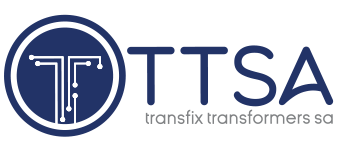South Africa has confirmed the signing of three new policy loan agreements – worth more than $1.8-billion – in support of the country’s Just Energy Transition Investment Plan (JET-IP), the implementation plan for which was approved by Cabinet last week. The dollar- and euro-denominated loans are described as “concessional’ and have been provided directly to the National Treasury for general budget expenditure purposes by the World Bank, Germany’s Kreditanstalt für Wiederaufbau (KfW), and the African Development Bank (AfDB).
Posts
South Africa is likely to prioritise energy security over its decarbonisation aspirations to avoid further damage to its economy, said James Mackay, the chief executive officer of the Energy Council of South Africa. That would involve extending the life of some of state power utility Eskom’s coal-fired plants. The cost may be reduced access to concessional climate finance and a decline in the competitiveness of South African exports as the European Union ramps up levies on imported products that have carbon-heavy production processes, he said.
Electric vehicle (EV) charging station developer Zero Carbon Charge has broken ground on its first 100% renewable energy charging station in Wolmaransstad, in the North West, in what is to become South Africa’s first national network of 120 solar-powered charging facilities spaced out at 150 km intervals. The first Zero Carbon Charge facility at Wolmaransstad is due for completion in June next year and is differentiated from existing EV charging stations that are connected to State-owned Eskom’s predominantly coal-powered grid.
The enlarged International Partners Group (IPG) has reaffirmed its commitment to extend concessional funding to South Africa in support of the country’s Just Energy Transition Investment Plan (JET-IP) and has also confirmed that total financing commitments have been increased to $9.3-billion from $8.5-billion. Initially comprising France, Germany, the UK, the US and the European Union, the IPG was expanded earlier this year to include Denmark and the Netherlands.
Cabinet has approved the Just Energy Transition Implementation Plan (JET-IP), Minister in the Presidency Khumbudzo Ntshavheni announced in a briefing in Pretoria on November 20. “The implementation plan will guide South Africa’s transition to a low-carbon economy through the scaling up of renewable energy sources,” she explained during a post-Cabinet media briefing.
Eskom is preparing to introduce 11 synchronous condensers – seven new and four repurposed – across its transmission system to support grid stability as the penetration of variable renewable-energy generators rises. The need for the synchronous condensers – to provide dynamic voltage support, inertia and short-circuit current required for the integration of inverter-based technologies – was identified in a recent power system modelling study conducted by the State-owned company.
Electricity Minister Kgosientsho Ramokgopa reports that the country’s next renewables bidding round will “not be location agnostic” and will seek to direct projects to areas where there is sufficient grid connection capacity available. “This time we’re going to be specific around where these location should be for the new projects because we want to ensure that there’s some degree of alignment between the projects and the availability of transmission capacity,” the Minister said during his latest update on the implementation of the Energy Action Plan.
Germany, through its KfW development bank, will as soon as Friday sign an agreement to lend South Africa €500-million ($543-million) to help it transition away from the use of coal-fired electricity, people with knowledge of the pact said. The money forms part of the $8.8-billion in climate financing offered to South Africa by some of the world’s richest nations in a 2021 agreement known as the Just Energy Transition Partnership, the people said, asking not to be identified as the information isn’t public yet.
South Africa’s supply of natural gas is set to plunge within the next three to four years and there’s a risk of a shortfall triggering the country’s next economic crisis, the head of an industry body warned. With Sasol set to curb production of the fuel from its fields in Mozambique between 2026 and 2027 as reserves dwindle and retain more output for its own operations, 300 000 to 400 000 jobs at firms that use gas for industrial purposes are endangered, said James Mackay, the chief executive officer of the Energy Council of South Africa.
Diversified mining and renewable energy solutions company Exxaro Resources and its wholly-owned subsidiary Cennergi on November 16 unveiled the Lephalale solar project (LSP), with the sodturning serving as a ceremonial opening of the project. The project is a utility-scale behind-the-meter solar photovoltaic (PV) plant.
INDUSTRY NEWS
- Growthpoint to provide renewable energy certificates for 26 Nedbank branches that are using its …November 7, 2025 - 4:04 pm
- Ramokgopa chides coal industry for its silence in energy debateNovember 7, 2025 - 3:04 pm
- Consultancy calls for creation of ‘Just Transition Worker Fund’ to address climate-linked …November 7, 2025 - 3:04 pm
WHERE TO FIND US
Address
9 Yellow Street
Botshabelo Industrial Area
Botshabelo, Free State
Call / Email Us
Tel: +27 (0) 61 956 6772
Email: info@transfix.co.za
